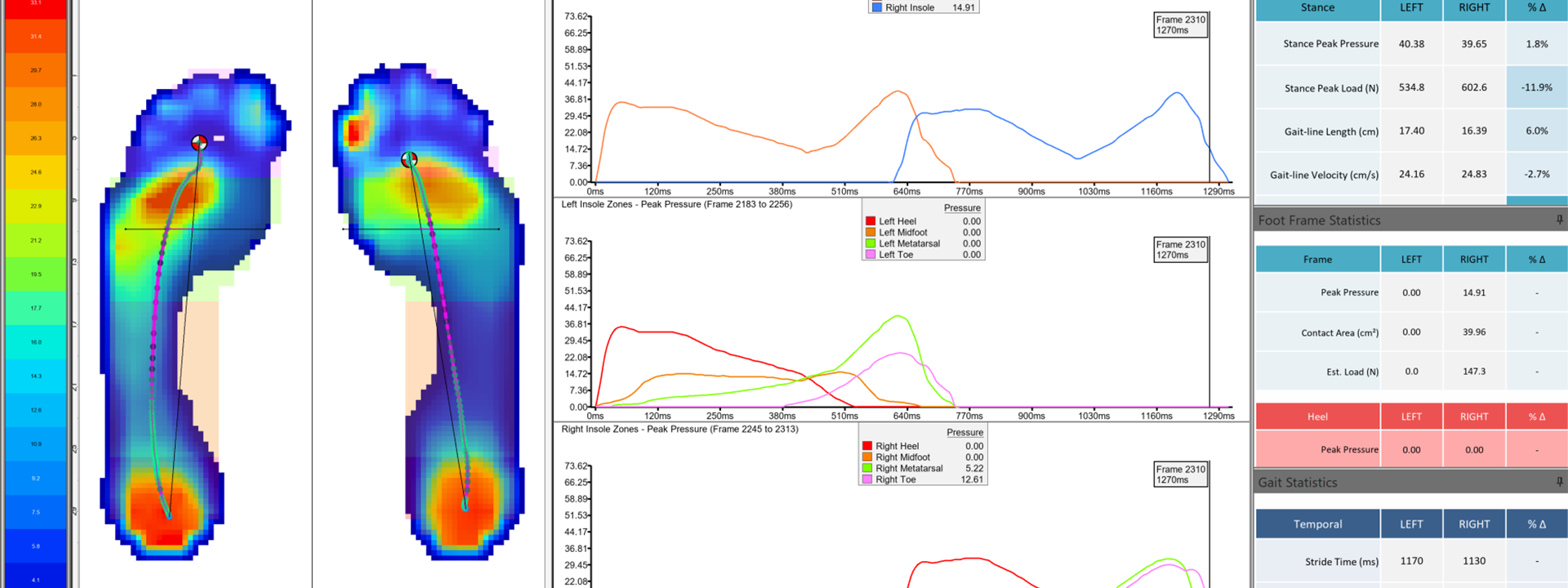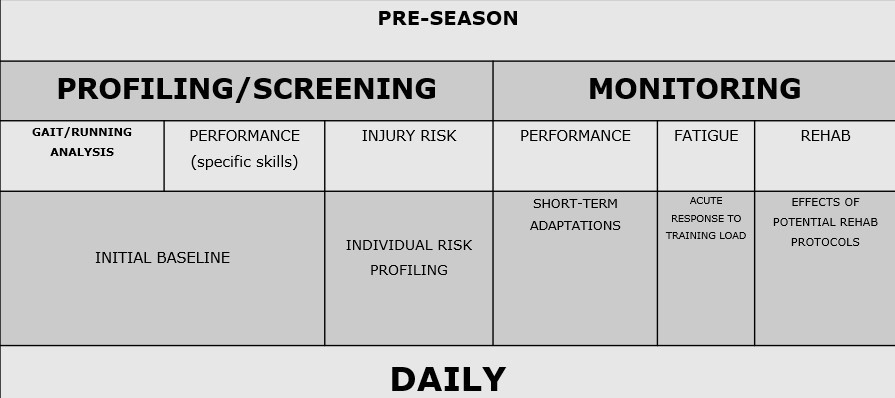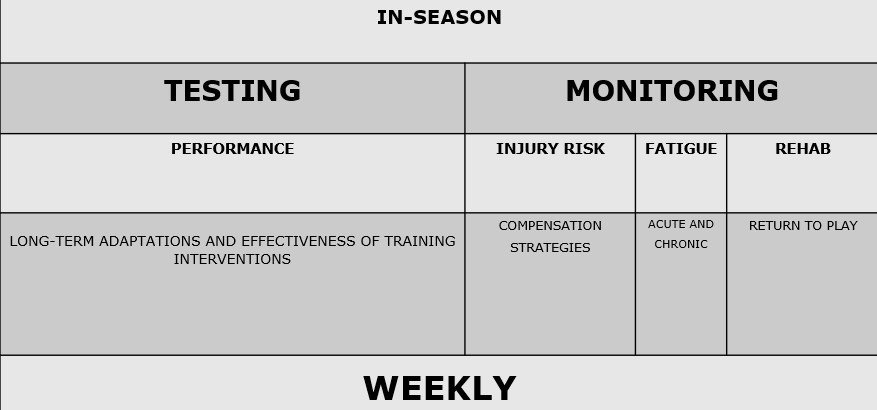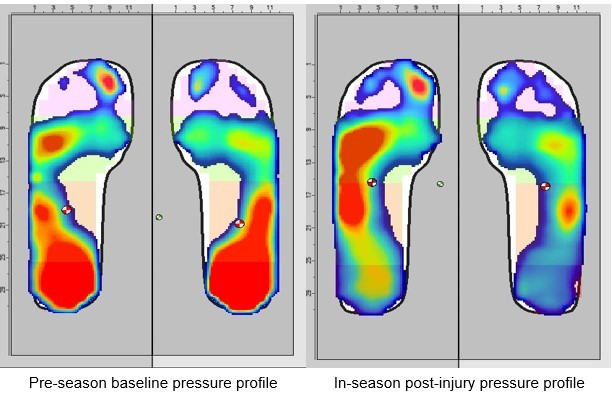
How to Profile Players in Team Sports Using Plantar Pressure Mapping Technology
In our all-new series of articles on using plantar pressure mapping in team sports, we will review how XSENSOR’s Intelligent Insoles can be implemented within a testing and monitoring framework to decrease the risk of injury and support player performance.
Team-based sports are complex biological systems. The interconnection of several factors and the multidisciplinary nature of an athlete's care require systematically implementing testing and monitoring technologies to ensure adequate support and risk management. However, the little time available for testing players highlights the need for fast, reliable technology that provides detailed and accurate data.
Plantar pressure mapping with the use of products such as the Intelligent Insoles can play a game-changing role in team sports in supporting performance and decreasing the risk of injury because it accomplishes the three main variables to take into account when deciding on implementing technology in a team environment: Time, Pressure, and Data Visualization.
Time
The time available for testing and monitoring players in a team sports environment is minimal, so the implementation of technology is focused on finding tools that provide as much insight as possible in the least amount of time. This is a fundamental aspect to consider due to busy schedules and sudden changes in the weekly programs of professional teams that may contribute to relegating monitoring to the lowest set of priorities.
Pressure
The constant pressure to which staff members are subjected during the entire competitive season can be detrimental at the expense of the quality of daily practice. Some research has already been done on the implications of pressure in professional sports (Kroshus et al., 2015), and we can hypothesize by on-field experience that this type of pressure can affect clinical practice to some extent. A quick and automated workflow can reduce the risk of low-quality work, and technologies like XSENSOR’s Intelligent Insoles can be easily integrated into every team environment due to its design and ease of use.
Data Visualization
Poor data visualization and a software architecture unsuited for athlete testing have always been limiting factors in implementing plantar pressure mapping technology in team sports.
XSENSOR has solved this problem by developing software with structure and data visualization properties perfect for quick recording and an intuitive data analysis suitable for out-of-the-lab applications.
Player Profiling in Preseason
Application timing is vital in managing player testing with plantar pressure mapping, as it is necessary to define a framework depending on the goal of monitoring and the period of the season.
During preseason, the Intelligent Insoles can be used first to create a baseline pressure profile for each player. Once a baseline has been established, follow-up measurements can be done daily (especially in preseason camps) to monitor both performance and potential fatigue that may present with an overload of specific zones of the foot (acute response to training load).

Figure 1. Example of how plantar pressure mapping measurements can be planned during the preseason.
Measurement protocols must be clear and established from the beginning of the preseason. XSENSOR’s Pro Foot & Gait software can facilitate the process by allowing strength and conditioning coaches, athletic trainers, and sports medicine practitioners to choose from a list of several biomechanics metrics, making the process of testing and data reporting easily customizable based on the need of the sport.

Figure 2. General testing protocols for baseline pressure profiles.
Regular Season Monitoring
Once an individual pressure profile has been established, it can be used as a reference point for monitoring during the competitive season.
It is essential for monitoring purposes to spot any deviation from the baseline (changes in pressure distribution and variation in the trajectory of the center of pressure) that may raise a red flag for potential risk of injury or stress fracture.

Figure 3. Example of how plantar pressure mapping measurements can be planned during the regular season.

Figure 4. Example of monitoring during the regular season after an injury.
To learn how to use plantar pressure mapping technology to build a player pressure profile in team sports during the preseason, be sure to watch our first webinar in our ‘Plantar Pressure Mapping in Team Sports’ series, How to Profile Players with XSENSOR’s Intelligent Insoles.
References
- Kroshus E, Baugh CM, Daneshvar DH, Stamm JM, Laursen RM, Austin SB. Pressure on sports medicine clinicians to prematurely return collegiate athletes to play after concussion. Journal of Athletic Training. September 2015; 50(9): 944-951.
